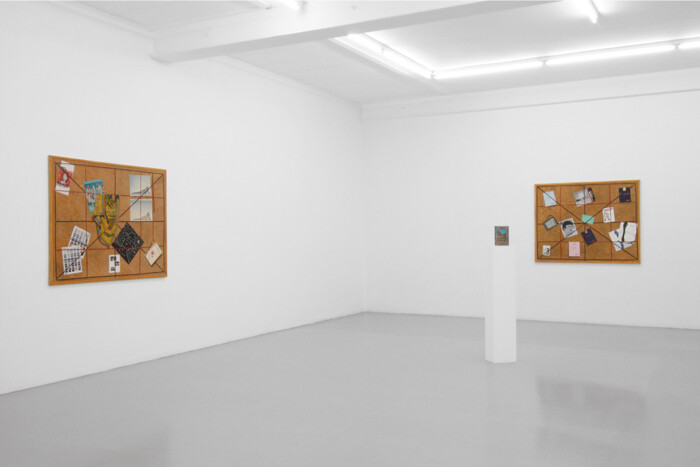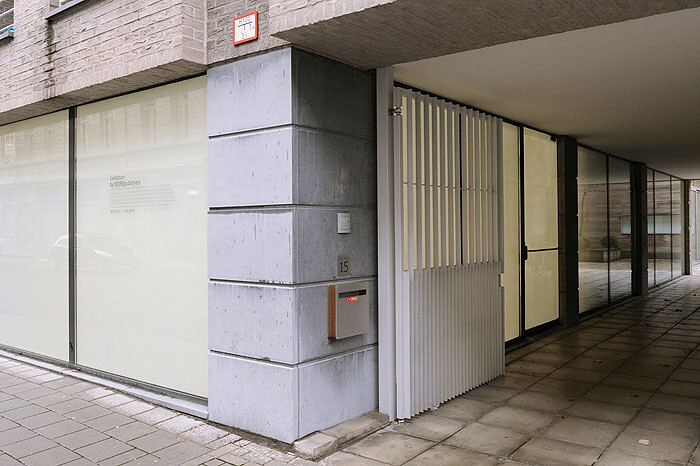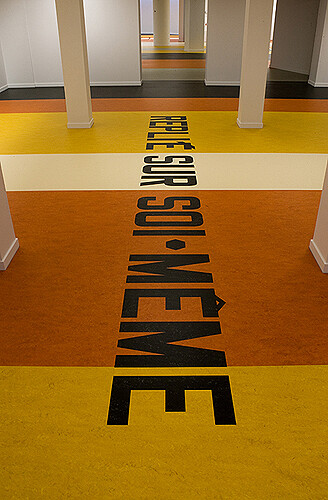Categories
Subjects
Authors
Artists
Venues
Locations
Calendar
Filter
Done
September 15, 2012 – Review
Lucy McKenzie’s "50 Shades"
Christel Vesters

In a recent conversation with the Scottish artist Lucy McKenzie published in Mousse magazine, the French-British artist Marc Camille Chaimowicz described McKenzie’s work as having “conscious slippage.” It sounded a bit cryptic, but after having visited her recent exhibition of paintings at the Antwerp gallery Micheline Szwajcer, I knew exactly what he meant. First of all, nothing in the exhibition is what it appears to be; the bulletin boards holding collages of items are in fact paintings, and the faux-Agatha Christie novel displayed on a pedestal literally covers up the recent chick-lit hit and title-giving novel Fifty Shades of Grey by E.L. James. Both paintings and book cover are trompe l’oeil: an intended slippage between reality and illusion.
Most of the works in this exhibition consist of recent additions to the series of paintings titled “Quodlibet,” a Latin term which, amongst other things, means “that which pleases”. McKenzie uses it here to refer to a genre within trompe l’oeil painting en vogue in architecture in the early 19th century which featured realistically rendered wall paintings of random items (playing-cards, ribbons, and scissors). Different from the Baroque use of architectural trompe l’oeil, which created the illusion of an expanded space—or in its …
January 15, 2012 – Review
"EXHIBITION" by MOREpublishers
David Catherall

Mirroring a range of ephemera and printed matter on the periphery of exhibition making, publishing, and artistic practices, Brussels-based MOREpublishers have presented the group show “EXHIBITION” to reflect on their own activities of commissioning artist editions. By employing a syntax of framing and formatting, “EXHIBITION” plays on both the notion of an exhibition and that of a publishing house as an image by fragmenting and de-centralizing the various elements and components of printing, and presenting specific works that animate an otherwise static visual culture.
At the center of “EXHIBITION” is a conversation: in lieu of a press release, the edited transcript between artist Michael Van Den Abeele and MOREpublishers, Butlers for Butlers, serves to breakdown the hierarchy between “servers.” It also serves as an allegory for institutional procedures: how image and text, exhibition and publication, presentation and documentation can potentially (or not) serve each other in a self-contained, self-referential system. Oscillating between authorship and readership, producer and consumer, labor and leisure, the individual works of the show construct a form of architecture (a Château, a master) that overshadows the circulation of material as a server to images.
For instance, Richard Venlet has painted the windows of the gallery to delineate its perimeters …
February 14, 2011 – Review
Liam Gillick and Lawrence Weiner’s "A syntax of dependency:" at M HKA, Antwerp
Christophe van Gerrewey

After years of close friendship and close reading of each other’s work, Liam Gillick and Lawrence Weiner have finally made an artwork together. “A syntax of dependency:” occupies the first floor of the M HKA in Antwerp—a sort of indoor park interrupted by square columns and large wall openings from one room to the next. Nothing is on display here, at least not in the traditional sense: the only thing the artists have done is to give new flooring to this 1600 m2 space. Stretching out before the visitor like a strange empty basketball court, its wall-to-wall parallel strips of colored linoleum—red, yellow, black, white, gray—are covered sporadically with hints for the rules of the game played here: “That what / sets the stage / for what”; “Folded within itself”; “Outside of any given context.”
Those rules—and that is the catch indicated by the title—are never absolute. Nothing exists without help, support or resistance; it’s one great endless syntactic connection. Different meanings and interpretations walk hand in hand, creating chains of causality and possibility, chains that are as easily broken as created. It is certainly no coincidence, for example, that the colors of the Belgian flag (black, yellow, red) are prominent …
